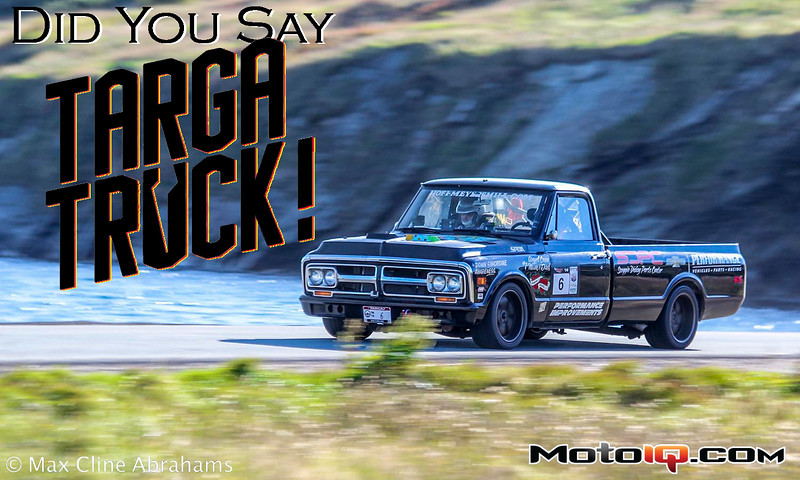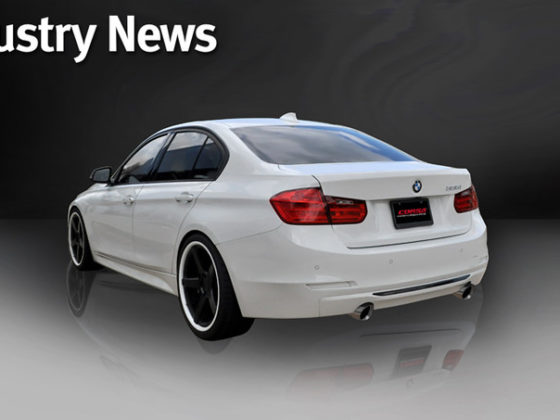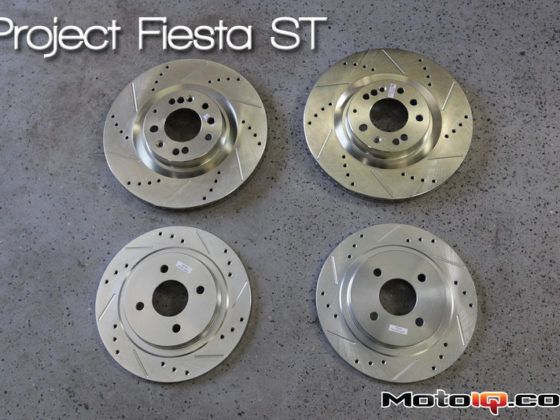,
 There was just a bit of brake dust on the rims of the Targa Truck – lending itself to some very appropriate graffiti.
There was just a bit of brake dust on the rims of the Targa Truck – lending itself to some very appropriate graffiti. Stopping power is supplied by Wilwood calipers at all four corners. The fronts are Wilwood D52 two piston calipers with a 6.28″ piston area matched with stock GM 12″ by 1.28″ rotors and Wilwood's BP-20 brake pads. This is all well-vented to keep the brakes cool so that it was always able to bring this massive vehicle to a stop. The rear has Wilwood Dynalite Calipers – 3″ piston area – with Wilwood 12.19″ rotors and BP-20 brake pads. There is also a 10lb residual valve to help control pad knock back. Since routing venting to the rear brakes was going to be a challenge, Mark installed a blower setup, similar to what you would find on a stock car. You will recall from earlier engine bay pictures that the master cylinder is a Wilwood 1″ manual system. The brakes for the truck took a lot of effort and credits Ron Sutton Race Technology for calculating and setting up the braking system. This was obviously not stock and required a lot of preparation and planning – none of it is plug and play. The rear setup hardware selection was also significantly limited by the rear end. The tires are 295/35/18 BF Goodrich Rivals mounted on custom 18″x10″ wheels and held in place by ARP studs and Moroso lug nuts.
 Mark's got the best winter storage facility ever. Performance Improvements, one of his sponsors, has the truck parked just inside the front doors of their showroom! Here Mark is telling me about the hood venting and about the custom paint job that the folks at Bolt Fresh Bar, another sponsor, did to add some colour and life to this truck.
Mark's got the best winter storage facility ever. Performance Improvements, one of his sponsors, has the truck parked just inside the front doors of their showroom! Here Mark is telling me about the hood venting and about the custom paint job that the folks at Bolt Fresh Bar, another sponsor, did to add some colour and life to this truck. Just like an exotic sports car draws attention wherever it goes, so does the Targa Truck. Perhaps even moreso. When Mark and Miles were testing out the truck in the spring at the CTMP driver development track, a huge crowd of enthusiasts gathered around any time the truck was sitting still. Two of the people in the crowd were Andy and Rob McJannett from Performance Improvements. Gear heads themselves, they loved the concept of Targa Truck and put their support fully into the truck. Performance Improvements was integral in sourcing specialty parts and giving the team a great and much needed morale boost.
 The hood vents are larger than the windows in some people's apartments. And very necessary to keep the underhood temperatures under control.
The hood vents are larger than the windows in some people's apartments. And very necessary to keep the underhood temperatures under control.Mark and Miles, in preparation for the Targa, would go out of their way to break the truck! Due to the remote location of the event and the possibility that a hardware breakdown could sideline them, they pushed the truck to the limit in practice. The challenge of this was that they could not push the truck on public roads, so they looked for opportunities at race tracks for track days, schools, and autocross where they could go challenge themselves. In doing so they found out which brake rotors held up to the type of punishment that they would be dishing out. Drilled rotors looked great, but not the best setup for endurance and durability. Managing the heat, even with holes the size of windows in the hood, was a challenge. They ran it so hard at Toronto Motorsport Park that they actually set it on fire! They were not intentionally trying to burn the truck, but they were trying to see how it handled heat and at one point it simply shut down. When they tried to restart it the starter jammed on, would not release, and burst into flames. Flipped off the battery disconnect, but the flames were already there. After the fire was out they towed it back to the track paddock and, as it cooled down, they heard the solinoid disconnect. Bump started it and then drove it the one plus hours home. Since then, almost everything that is fuel, brake, or starter related is covered with heat protection. Miles of DEI heat covering are used.
 Looking out over one of the hood vents you can see a few more of the cars that were participating in Targa Newfoundland. The #3 car is a 1959 Chevrolet Corvette driven by Douglas Brown and navigation done by Kenneth Brown. Two Doctors whose car was nicknamed 'Blood Drive' and they sought to raise awareness about donating blood. If they hadn't had a mishap early on, they may have challenged the Targa Truck for that podium spot.
Looking out over one of the hood vents you can see a few more of the cars that were participating in Targa Newfoundland. The #3 car is a 1959 Chevrolet Corvette driven by Douglas Brown and navigation done by Kenneth Brown. Two Doctors whose car was nicknamed 'Blood Drive' and they sought to raise awareness about donating blood. If they hadn't had a mishap early on, they may have challenged the Targa Truck for that podium spot. This is jumping back in time, but now is a good time to tell you that for a short time it looked like there would be no Targa Truck in the 2014 event. Months of effort and planning, tons of money, and it almost didn't happen in the final few hours prior to the start time. No matter how much preparation you do, if the truck is somewhere between Ontario and Newfoundland, and the mandatory Targa School is beginning, then you have to improvise. The rental Toyota (I think it is silver and not beige!) was the closest they could come to a stunt double! Targa Truck arrived a mere 16 hours before the first stage was to start. And just minutes before Tech closed – meaning they almost missed the event. Mark and Miles still had a couple of days of prep work that they had to rush through, simply having to forgo about some things.
This is jumping back in time, but now is a good time to tell you that for a short time it looked like there would be no Targa Truck in the 2014 event. Months of effort and planning, tons of money, and it almost didn't happen in the final few hours prior to the start time. No matter how much preparation you do, if the truck is somewhere between Ontario and Newfoundland, and the mandatory Targa School is beginning, then you have to improvise. The rental Toyota (I think it is silver and not beige!) was the closest they could come to a stunt double! Targa Truck arrived a mere 16 hours before the first stage was to start. And just minutes before Tech closed – meaning they almost missed the event. Mark and Miles still had a couple of days of prep work that they had to rush through, simply having to forgo about some things.


